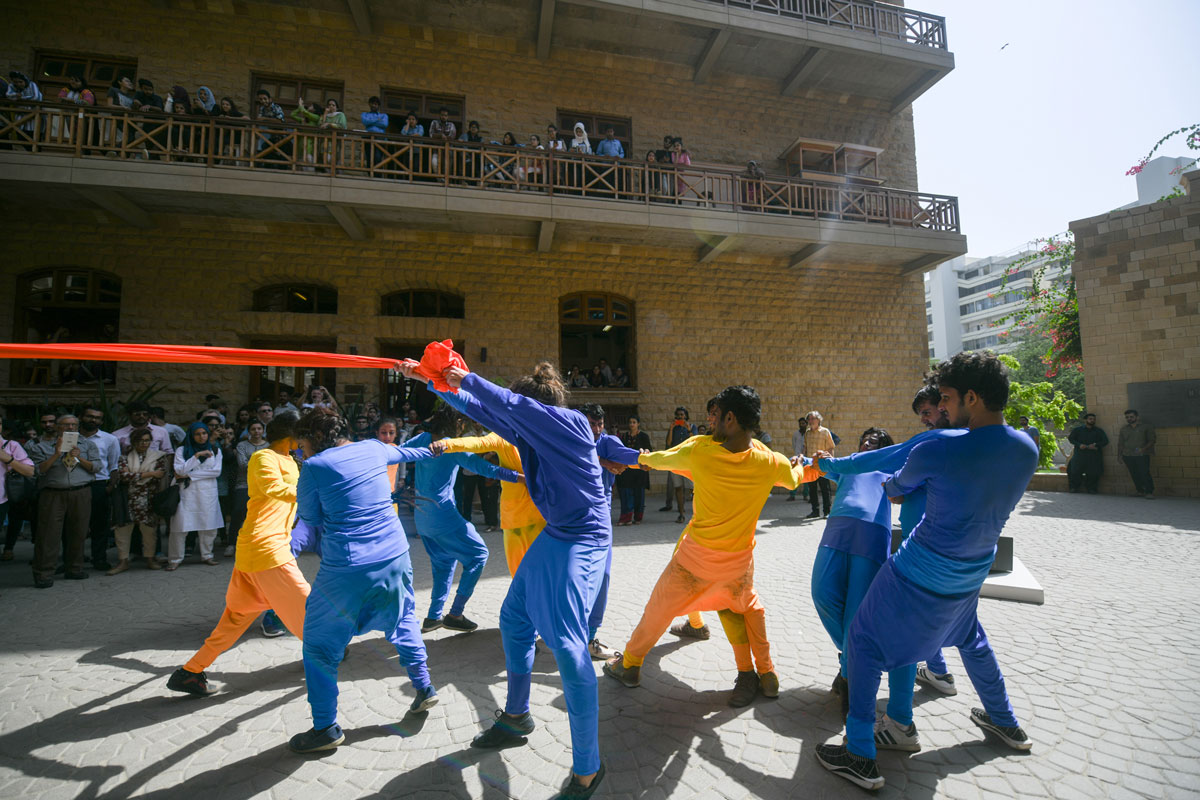Miro Craemer
Born in 1969 in Weißenburg / Bayern (Germany)
Lives and works in Munich (Germany)
Miro Craemer is a fashion and social designer working as an independent designer for various labels in the field of sports fashion. In 2007, he created his own fashion and cultural label, “Miro Craemer”, and in 2011 he initiated the interdisciplinary symposium, “Wert @ Frei” at the Alte Literaturhaus. This interdisciplinary focus has manifested itself in his work, and since 2015, he has been conceiving and curating various projects which explore the interrelationship between art, fashion and textiles, staging performative works, hosting workshops and exhibiting in a variety of spaces including: the Kunstareal; the Kunstraum Milchstraße; the Neues Museum; the Pinakothek der Moderne; the Staatliches Industrie- und Textilmuseum; and at the Vienna Art Week, as well as creating a public textile installation, Cord of Desires (2016) in Karachi.
In his performative installation adapted for the Karachi Biennale 2017, OVERxCOME, Craemer explores the interrelationship between bodies, borders, surfaces, and materials, with constructive movement as the nucleus. The exegesis of the scenic-choreographic performance OVERxCOME lies in a week-long workshop with Miro Craemer, German dancer and choreographer Katrin Schafitel, Pakistani actor Sunil Shanker, and Cairo-based curator and writer Sara-Duana Meyer, in collaboration with German brass-player and Indologist Simon Otto and local actors, dancers, and musicians in Karachi. This process reflects Craemer’s interdisciplinary and participative approach in the creation of art, combining the fields of dance, theatre, music, textiles and fashion to form a collective exploration, transcription and transcendence of the liminal spaces of the self, the binary oppositions of man and woman, and cultural inhibitions. The textile concept of the work ostensibly delineates and codifies, requiring the audience to question first impressions, take up a position, and hence to become a decisive part of the performative installation. With this in mind, Craemer has developed costumes that utilise and subvert the semiotic implications of colour, material and shapes, causing the audience to second guess the meaning of these visual identifiers. The design finds a resonance with the South Asian tradition of kite-flying, in its oppositional interpretations of both freedom and attachment, and serenity and volatility, whilst the yellow and blue palette of the costumes inspired by Albrecht Altdorfer’s historical painting, Alexanderschlacht (1529), a depiction of a battle between the ‘oriental’ and ‘occidental’ in which the artist assigned colour schematically to differentiate between the opposing sides. Working these codes into the textile design, the textile aspect of OVERxCOME toys with notions of the oppositional and the complementary and asks the audience to reinterpret both historical and contemporary assumptions of distance and proximity, separation and connection.

OVERxCOME, 2017.
Workshop and performative installation
25 min.

